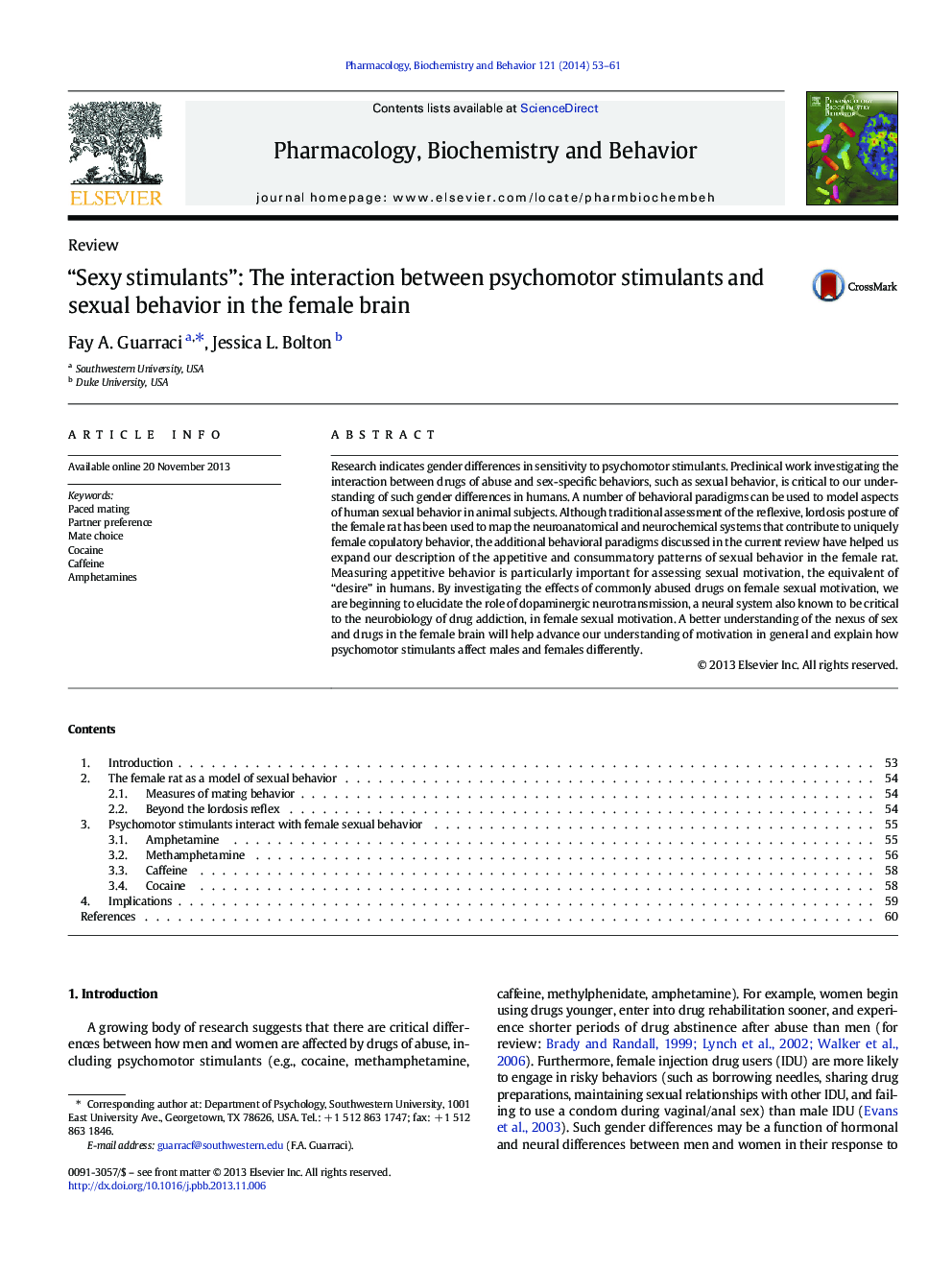| Article ID | Journal | Published Year | Pages | File Type |
|---|---|---|---|---|
| 2012840 | Pharmacology Biochemistry and Behavior | 2014 | 9 Pages |
•Sex differences in sensitivity to drugs of abuse have been observed in humans.•The effects of drugs on sex-specific behaviors can help explain these differences.•Animal models of female sexual motivation are critical to this area of research.•The effects of different psychomotor stimulants on sexual behavior are distinct.
Research indicates gender differences in sensitivity to psychomotor stimulants. Preclinical work investigating the interaction between drugs of abuse and sex-specific behaviors, such as sexual behavior, is critical to our understanding of such gender differences in humans. A number of behavioral paradigms can be used to model aspects of human sexual behavior in animal subjects. Although traditional assessment of the reflexive, lordosis posture of the female rat has been used to map the neuroanatomical and neurochemical systems that contribute to uniquely female copulatory behavior, the additional behavioral paradigms discussed in the current review have helped us expand our description of the appetitive and consummatory patterns of sexual behavior in the female rat. Measuring appetitive behavior is particularly important for assessing sexual motivation, the equivalent of “desire” in humans. By investigating the effects of commonly abused drugs on female sexual motivation, we are beginning to elucidate the role of dopaminergic neurotransmission, a neural system also known to be critical to the neurobiology of drug addiction, in female sexual motivation. A better understanding of the nexus of sex and drugs in the female brain will help advance our understanding of motivation in general and explain how psychomotor stimulants affect males and females differently.
